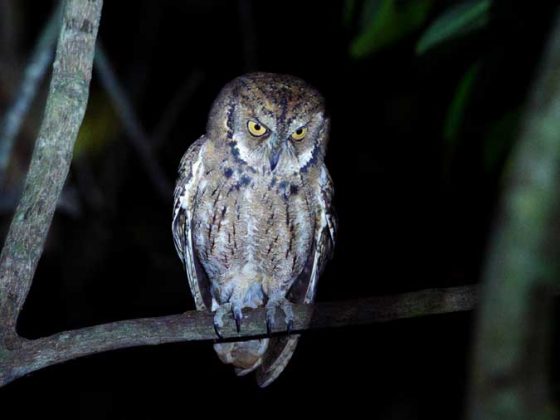A biodiversity conservation center being constructed in Puerto Galera aims to promote Mindoro’s unique flora and fauna and educate people on climate change.
A project of the Mindoro Biodiversity Foundation, Inc. (MBCFI), which undertakes the protection and preservation of Mindoro Island, the Mindoro Biodiversity Conservation Center in Barangay Dulangan, Puerto Galera, is composed of a Mangyan heritage hall, where the Mangyans can showcase their cultural heritage and sell their handicrafts; a greenhouse, where visitors can try their hand at bio-intensive gardening and nursery landscaping; and a research laboratory, where scientists and researchers can process specimens from key biodiversity areas in the island.
“We have constructed 40% of buildings 1 and 2,” said Grace C. Diamante, executive director of MBCFI, at a May 27 virtual event. The first phase of construction is expected to finish before the year ends, she added, although there have been delays due to bad weather.
Sponsorship opportunities — including those that fund the non-profit organization’s programs on scientific research, community-related activities, and information campaigns — are available, Ms. Diamante added. Individuals or groups that donate P5–15 million will have spaces named after them.
Located in the southwestern coast of Luzon and northeast of Palawan, Mindoro Island is recognized as one of the world’s biodiversity conservation priority areas, specifically in terms of the number of endemic (or native) species, diversity of habitats, and degrees of threats.
The MBCFI and the Malampaya Foundation, Inc. (MFI) have been undertaking the protection and preservation of the island, as well as the other key biodiversity areas of north Palawan and the Verde Island Passage.
Among the various flora and fauna found in the island are the tamaraw or dwarf water buffalo, the Philippine warty pig, the golden-crowned fruit bat, as well as various pine and rattan species. In her presentation, Ms. Diamante shared that Mindoro has more bird species than Madagascar (285 versus 258), known as a globally-recognized megadiversity country. It also has more reptile and amphibian species (70 versus 27) than the United Kingdom, a country with a land area 23 times that of the island.
“Central Philippines has the most number of marine species per unit area, with particular emphasis on the Verde Island Passage,” said Karen Agabin, executive director of Malampaya Foundation, the social arm of Malampaya Joint Venture partners. The Verde Island Passage is located between the islands of Mindoro and Luzon, and is recognized as the center of global shore-fish biodiversity.
A February 2013 study by Jonnell C. Sanciangco, et al., however, noted the evidence of exploitation-related biodiversity loss in central Philippines.
There has been a 90% decline in fish-catch rates since the 1950s to the year 2000, said Ms. Agabin. “Marine protected areas (MPAs) are effective solutions. They can accelerate restoration and [promote the] sustainable use of resources — but only if they are effectively managed,” she added.
MPAs are established to help protect marine ecosystems that are threatened by human activity, such as overfishing or petroleum drilling. They also provide living laboratories for oceanographers and marine biologists to conduct research, according to National Geographic.
“The prosperity of humans is dependent on biodiversity,” Ms. Agabin said. “Investing in biodiversity means investing in our future.” — Patricia B. Mirasol

